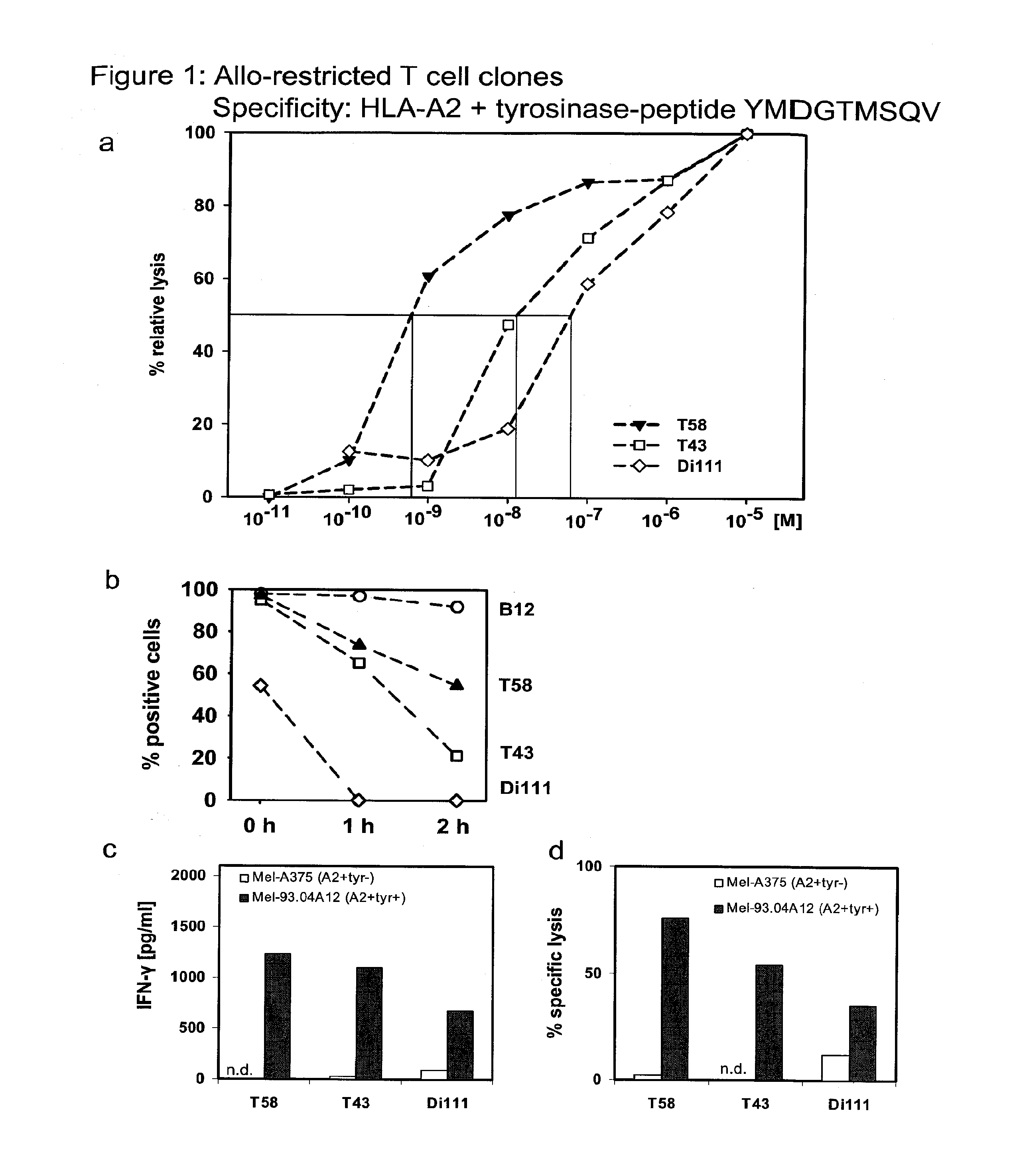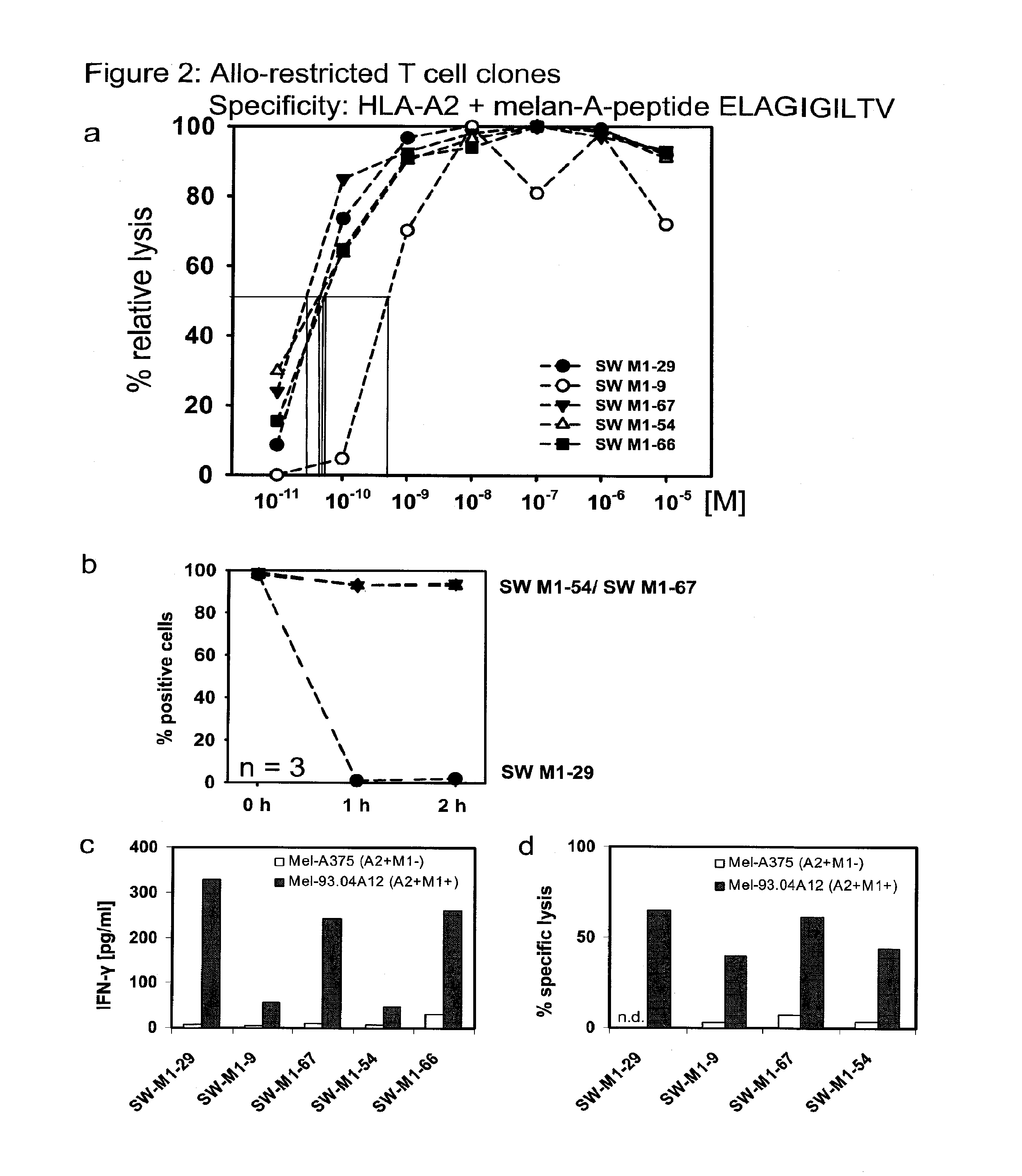Repertoire of allo-restricted peptide-specific t cell receptor sequences and use thereof
a t cell receptor and allo-restricted technology, applied in cell receptors/surface antigens/surface determinants, antineoplastic agents, immunological disorders, etc., can solve the problems of low-avidity of available tcr, inability to obtain t cells with appropriate specificity and function for effective tumor eradication, and inability to meet the needs of patients with rapidly progressing tumors. , to achieve the effect of defeating malignancies, minimizing
- Summary
- Abstract
- Description
- Claims
- Application Information
AI Technical Summary
Benefits of technology
Problems solved by technology
Method used
Image
Examples
examples
[0088]To isolate high-avidity T cells bearing TCR that recognize peptides presented by allogeneic major histocompatibility complex (MHC) molecules (i.e. allo-restricted T cells) and efficiently kill tumor cells with corresponding ligands, autologous dendritic cells (DC) obtained from HLA-A*0201-negative healthy donors were used for T cell priming following co-transfection with RNA encoding allogeneic HLA-A*0201 molecules and RNA encoding a selected TAA. Tyrosinase, melan-A and survivin were selected as the TAA; these are self-proteins that are often over-expressed in melanomas, and in the case of survivin many other types of tumors, and serve as examples of common tumor-associated antigens (TAA). DC were used to prime purified, autologous CD8+ T cells using two rounds of stimulation with freshly prepared RNA-pulsed DC. Prior to activation and after stimulation, the frequency of CD8+ T cells with TCR recognizing HLA-A2-peptide complexes was measured using HLA-multimers. Double-positi...
PUM
 Login to View More
Login to View More Abstract
Description
Claims
Application Information
 Login to View More
Login to View More - R&D
- Intellectual Property
- Life Sciences
- Materials
- Tech Scout
- Unparalleled Data Quality
- Higher Quality Content
- 60% Fewer Hallucinations
Browse by: Latest US Patents, China's latest patents, Technical Efficacy Thesaurus, Application Domain, Technology Topic, Popular Technical Reports.
© 2025 PatSnap. All rights reserved.Legal|Privacy policy|Modern Slavery Act Transparency Statement|Sitemap|About US| Contact US: help@patsnap.com



